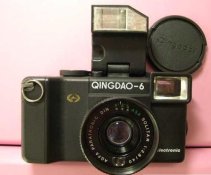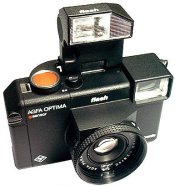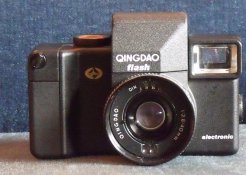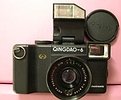I found a peculiarity at lenses whilst comparing cameras out of the Agfa Optima Sensor range.
-) Agnatar 40mm 3.5
-) Solitar 40mm 2.8
Both lenses are listed as Tessar types.
Both show exactly the same reflections, in size, position and colour.
However, both front lenses have the same diameter. (I know, front lens diameter is no true indicator for relative aperture, but with a Tessar-type this should be the case.)
Then, at further inspection I realized that the slower lens has a smaller fixed aperture (aside of the diaphragm aperture).
Thus seemingly both lenses are identical except for that installed smaller aperture ring.
Either to yield a bit more DOF (not likely) or to offer a cheaper model (that actually is in production costs identical to the more expensive one).
Do you know other cases where a camera is deliberatedly downgraded (without reducing costs) just for marketing reasons
-) Agnatar 40mm 3.5
-) Solitar 40mm 2.8
Both lenses are listed as Tessar types.
Both show exactly the same reflections, in size, position and colour.
However, both front lenses have the same diameter. (I know, front lens diameter is no true indicator for relative aperture, but with a Tessar-type this should be the case.)
Then, at further inspection I realized that the slower lens has a smaller fixed aperture (aside of the diaphragm aperture).
Thus seemingly both lenses are identical except for that installed smaller aperture ring.
Either to yield a bit more DOF (not likely) or to offer a cheaper model (that actually is in production costs identical to the more expensive one).
Do you know other cases where a camera is deliberatedly downgraded (without reducing costs) just for marketing reasons

















